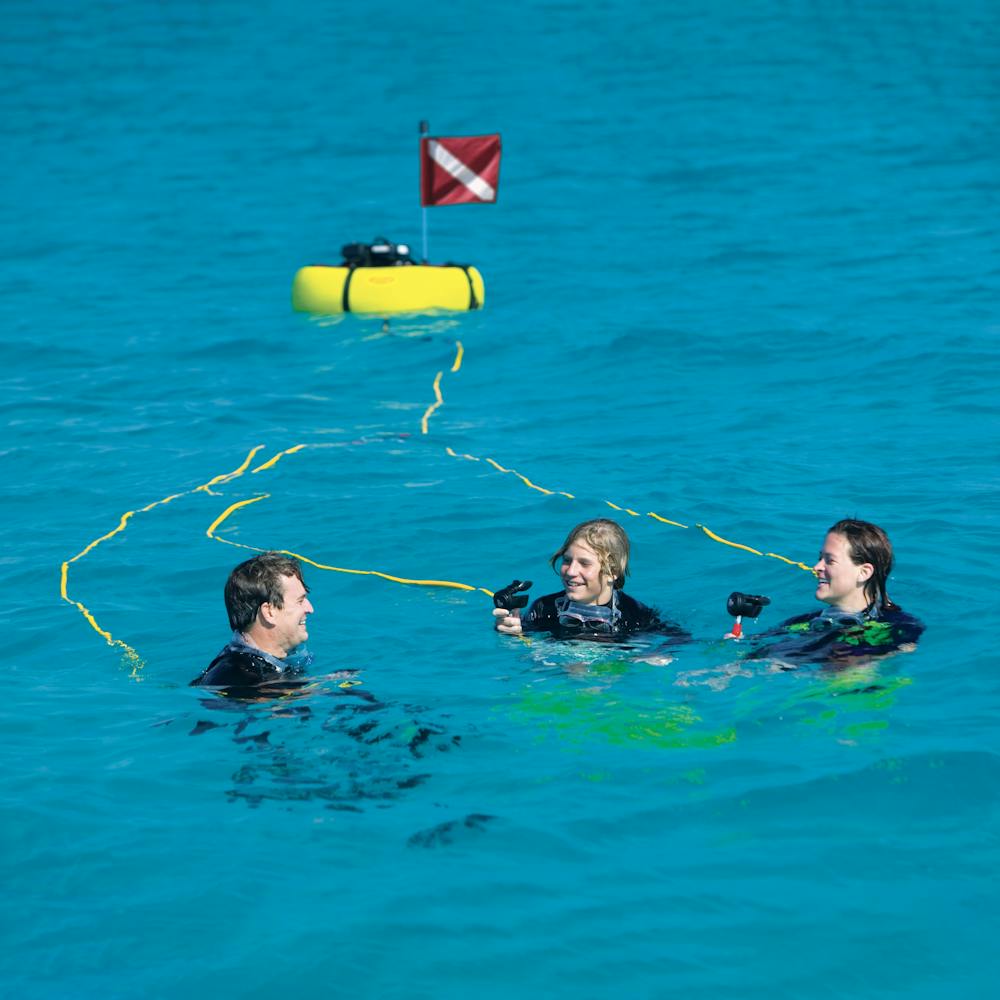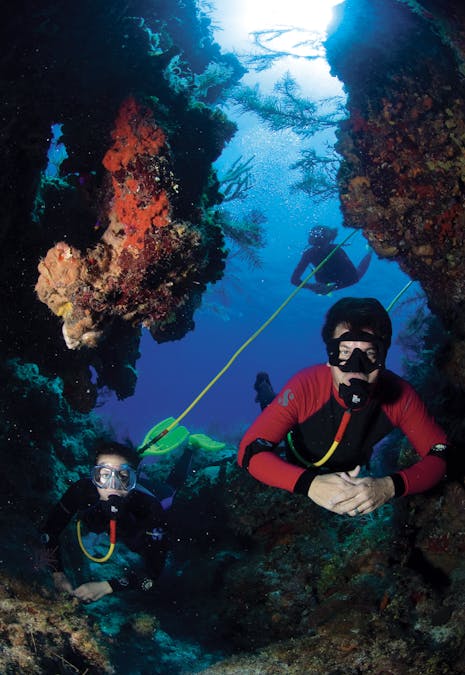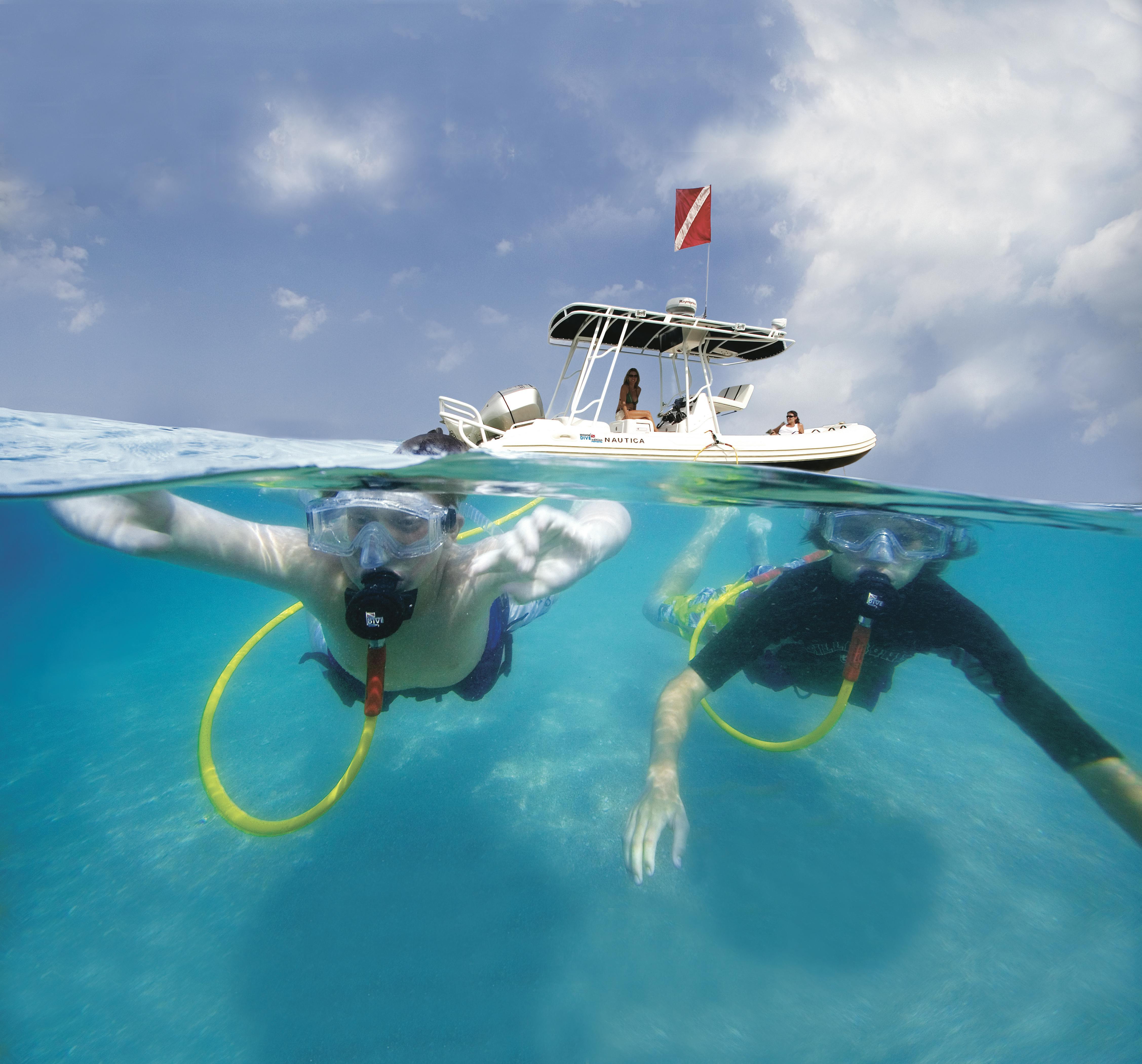Demystifying Tankless Diving (Hookah Diving)

What is Tankless Diving (aka Hookah Diving)?
Often referred to as Hookah Diving, a Tankless Diving system has a motor/compressor on the surface that pulls fresh air through an intake and delivers it to a common hose that branches off into individual hoses that attach to each diver’s weight belt and continues to a low pressure second stage regulator. Note that the individual hoses branch off in a y-shape to allow each of the individual divers some space to explore.
With gas powered, battery powered, and shore powered Hookah Diving systems designed for one to multiple divers, there’s almost certainly one to fit your needs. Easily customizable and expandable, creating the setup you need for almost any given situation can be a snap.
What are the benefits of Hookah Diving/Tankless Diving?
Tankless diving enables you to explore and hunt with more freedom and less damage to the reefs. Though there are many benefits, the biggest is that you get to leave the majority of the gear on the surface. This is a huge difference because with Hookah Diving you have better range of motion, less effort, and less drag in the water. Also, leaving the system on the surface, you create less noise and disturbance down below.

Is Tankless Diving safe?
Tankless diving is just as safe as any other form of diving. And if you’re nervous about diving on a gas powered Tankless Diving system, check out the battery powered ones or, if your dive conditions permit, the shore powered ones offer even more peace of mind. Note that gas and battery powered units are the most popular among recreational divers simply because you’re usually exploring quite a ways away from shore power.
Gas and battery powered units offer roughly the same experience as far as run time and anticipated dive time. Both have advantages and disadvantages, just choose which setup fits your needs best. You’ll have to keep a supply of gas for the one; however, you’ll have to make sure to charge up your battery(ies) for the other.
How does Tankless Diving work?
Once you turn the unit on, it begins moving air through the intake, down the common hose, then into the individual hoses, and to your low pressure regulators. Since your regulators are on demand (delivers air when you breathe), the air is ready and waiting in your hose for your next breath.
When you have 2-3 divers on one system, it fills the hose as air is consumed wherever it is consumed. The systems work so well that you’d never even know if your dive buddy is breathing more or less air than you. And since it’s pulling air from the surface…your air supply is limited only by how much gas or battery power your unit has.
How deep can you dive on a Tankless Diving system?
This depends on your system, the setup, and how many divers you have using the same system. Typically, 65 feet is the deepest you’ll go on a Tankless Diving system with the sweet spot being around 30-45 feet. Number of divers, the Hookah Diving system you’re using, and breathing rate of all divers need to be considered as you plan your dives.
Do I have to be a certified Open Water Scuba diver to use a Tankless Diving system?
Yes. Even though you’re using a Tankless Diving system, all the safety considerations that go along with Scuba diving are still concerns with a hookah system.






Who would use a Tankless Diving system?
Literally everyone. Most floating systems are designed to handle up to 3 foot waves, so shore divers and boat divers are good for most days on the water. There are land based systems also which make a lot of sense for those who might need to clean the bottom of their boat.
Because of the design of the Tankless Diving systems, people who cannot manage the weight of dive tanks and all the gear are able to enjoy diving. Even those who are capable of handling the bulk and weight of traditional dive gear tend to fall in love with Tankless Diving once they’ve tried it - especially the hunters.
Did we mention how easy a Tankless Diving system is for lobstering? If you’re into that, when lobster season rolls around you’ll be the envy of all your friends. These systems make it so much easier to quickly bag your limit and go on about your day.
We mentioned hunters earlier, and another benefit of the Tankless system includes being able to stay down much longer as compared to freediving. Additionally, you leave the bulk, drag, and majority of the noise on the surface so you’re much quieter and less obvious as you stalk and hunt your prey.

When does diving with a Hookah Diving system not make sense?
Tankless Diving systems are designed for your shallower dives on the reef, usually up to 65 feet. When you head out for a technical, wreck, cave, or deep dive, you’re going to want to take along your scuba gear (BC, regulator setup, tanks, etc) and leave your Tankless system at home.
Another time your Tankless Diving system doesn’t make sense is when you’re flying to a dive destination. This would be a great time to pull out your travel dive gear instead and take it along.
Would I still need a dive computer with a Tankless Diving system?
A dive computer is always highly recommended any time you’re dipping below the surface. The basis is around keeping you safe because you are, after all, breathing compressed air underwater. Doing more than just tracking your time underwater, most of your wrist dive computers will give you depth and time underwater. Some monitor your rate of ascent and descent, as well as safety stop alarms and timers. And some include a compass for easier navigation underwater.
